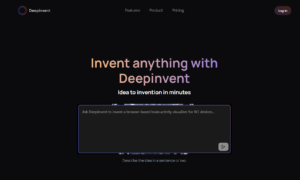In today’s rapidly evolving business landscape, transformational leaders are increasingly turning to technology as a cornerstone for driving organizational change and innovation. These visionary leaders understand that harnessing the power of modern applications is not just about staying ahead of the curve; it’s about fundamentally reshaping how their teams operate, collaborate, and make decisions. By embracing technology, they not only streamline processes but also empower their teams, leverage data for strategic insights, enhance accountability and transparency, and expedite decision-making.
Let’s delve deeper into how transformational leaders leverage modern applications across various facets of their leadership:
- Automating Repetitive Tasks: Recognizing the value of time and resources, transformational leaders utilize modern applications to automate repetitive tasks. By deploying project management tools, workflow automation software, and robotic process automation (RPA), they free up their teams from mundane activities, enabling them to focus on more creative and strategic endeavors.
- Using No-Code for Empowering Teams: Transformational leaders understand that innovation knows no bounds. To unleash the full potential of their teams, they embrace no-code and low-code platforms, democratizing the development process. By enabling team members to build applications and solutions without extensive coding knowledge, leaders foster a culture of innovation and empowerment within the organization.
- Data-Driven Decisions: In an era inundated with data, transformational leaders recognize the importance of leveraging insights for informed decision-making. Through the adoption of analytics tools, business intelligence platforms, and predictive modeling software, they harness the power of data to drive strategic initiatives, anticipate market trends, and optimize operational efficiency.
- Accountability and Transparency: Upholding accountability and transparency is paramount for transformational leaders. Leveraging technology, they establish robust communication channels, implement digital documentation systems, and deploy collaborative platforms. These tools not only facilitate seamless information sharing but also enable leaders to monitor progress in real-time, hold teams accountable for their actions, and cultivate a culture of transparency and trust.
- Faster Approvals: In a competitive business environment, agility is key. Transformational leaders leverage technology to streamline approval processes and eliminate bottlenecks. By implementing digital approval systems, workflow automation, and electronic signature solutions, theyexpedite decision-making, enhance operational agility, and ensure timely responses to evolving market dynamics.
In essence, transformational leaders recognize that technology is not merely a tool but a catalyst for organizational change and growth. By harnessing the full potential of modern tools they propel their teams and organizations towards greater agility, innovation, and success in an increasingly digital world.
Challenges faced by leaders while implementing modern technology
Here are the top 5 challenges faced by leaders when implementing modern applications:
- Resistance to Change: Resistance from employees who are comfortable with existing processes and systems can hinder the adoption of modern applications. Overcoming resistance requires effective change management strategies and clear communication about the benefits of the new technology.
- Lack of Technical Expertise: Finding employees with the necessary technical skills to implement and manage modern applications can be challenging. Leaders may need to invest in training programs or hire external expertise to bridge the skills gap.
- Integration Complexity: Integrating modern applications with existing systems and infrastructure can be complex and time-consuming. Leaders must carefully plan the integration process to ensure seamless interoperability and minimize disruptions to business operations.
- Security Concerns: Security risks such as data breaches and cyber attacks are major concerns when implementing modern applications. Leaders must prioritize cybersecurity measures and ensure compliance with relevant regulations to protect sensitive information and mitigate risks.
- User Adoption Challenges: Achieving widespread user adoption of modern applications can be difficult, particularly if employees are resistant to change or struggle to adapt to new technologies. Leaders must provide adequate training and support to help employees transition to the new system and realize its benefits.
When selecting modern applications, leaders should prioritize platforms like Codeless ONE, Zapier, Bubble, etc. that are intuitive and easy to use, as this can significantly enhance user adoption and productivity. A user-friendly interface reduces the learning curve for employees, enabling them to quickly familiarize themselves with the new technology and integrate it into their daily workflows. Additionally, leaders should seek out platforms that offer comprehensive support services, including training resources, technical assistance, and ongoing maintenance. Robust support ensures that employees have the resources they need to effectively utilize the application and address any issues that may arise, ultimately maximizing the return on investment and driving successful implementation.



































